Earlham Street West – proposed public realm improvements
Overview
Background
Earlham Street West is part of the Seven Dials area in Covent Garden, which is formed of seven streets that radiate from the landmark Sundial Pillar. Seven Dials was laid in the late seventeenth century; it contains over two hundred listed buildings and a mix of shops, restaurants, bars, theatres, hotels and residential properties.
Earlham Street West is one-way westbound and is dominated by parking on one side of the street and street market stalls on the other side. In 2014, vehicular access to Shaftesbury Avenue from Earlham Street West was closed following a successful six-month trial. The street provides a key east-west connection between Soho and Covent Garden; the pavements on the street are heavily used by pedestrians but they are cluttered and in poor condition. The street acts as a key entrance point to the Seven Dials area, but needs to be more pleasant and welcoming for residents and visitors.
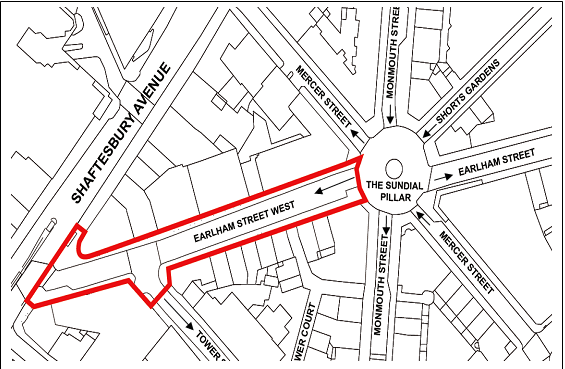
The area around Seven Dials is changing; by 2019, Camden’s West End Project (www.camden.gov.uk/westendproject) will be complete, which will bring significant changes to traffic arrangements and the public realm in areas such as Princes Circus. Additionally, the delivery of Crossrail at Tottenham Court Road will lead to a significant increase in the number of pedestrians in the Covent Garden and Seven Dials area, including Earlham Street West.
Why your views matter
Project Objectives
Officers have been working with local groups to agree a series of objectives for Earlham Street West and arrive at proposed changes that will help meet these objectives.
The agreed objectives of the Earlham Street West project are to:
- create a safer and more attractive connection for pedestrians and cyclists to neighbouring areas, especially Soho and St Giles
- improve the look and feel of the area and how it is used by residents, businesses and visitors
- develop the design of Earlham Street West that is informed by the Seven Dials Renaissance study (www.sevendials.com/the-study)
- develop the market layout to enable an integrated, visible and high quality street trading environment
Proposed changes for Earlham Street West (see plan 1)
Between Shaftesbury Avenue and Tower Street
- A new public space by Shaftesbury Avenue to welcome people to the area, with York stone paving, trees and cycle parking. Seating could also be provided during the day, but removed at night.
- Tree species with a small canopy so that they do not block views to the Sundial Pillar. Trees would be located between shop fronts and away from the entrance to Cambridge Court to maintain safety and access for residents and businesses.
- Dropped kerbs at the junction of Shaftesbury Avenue and Earlham Street to allow cycle access across the public space.
- A continuous surface across the public space area to provide more space for pedestrians.
Existing
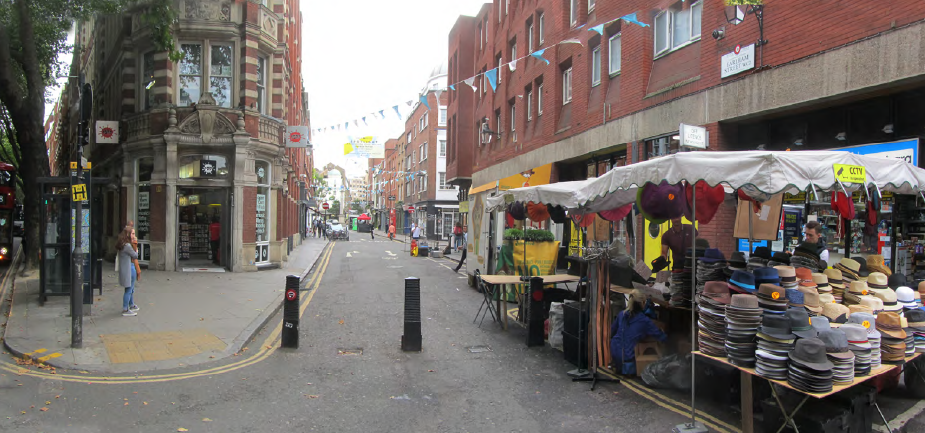 Proposed
Proposed
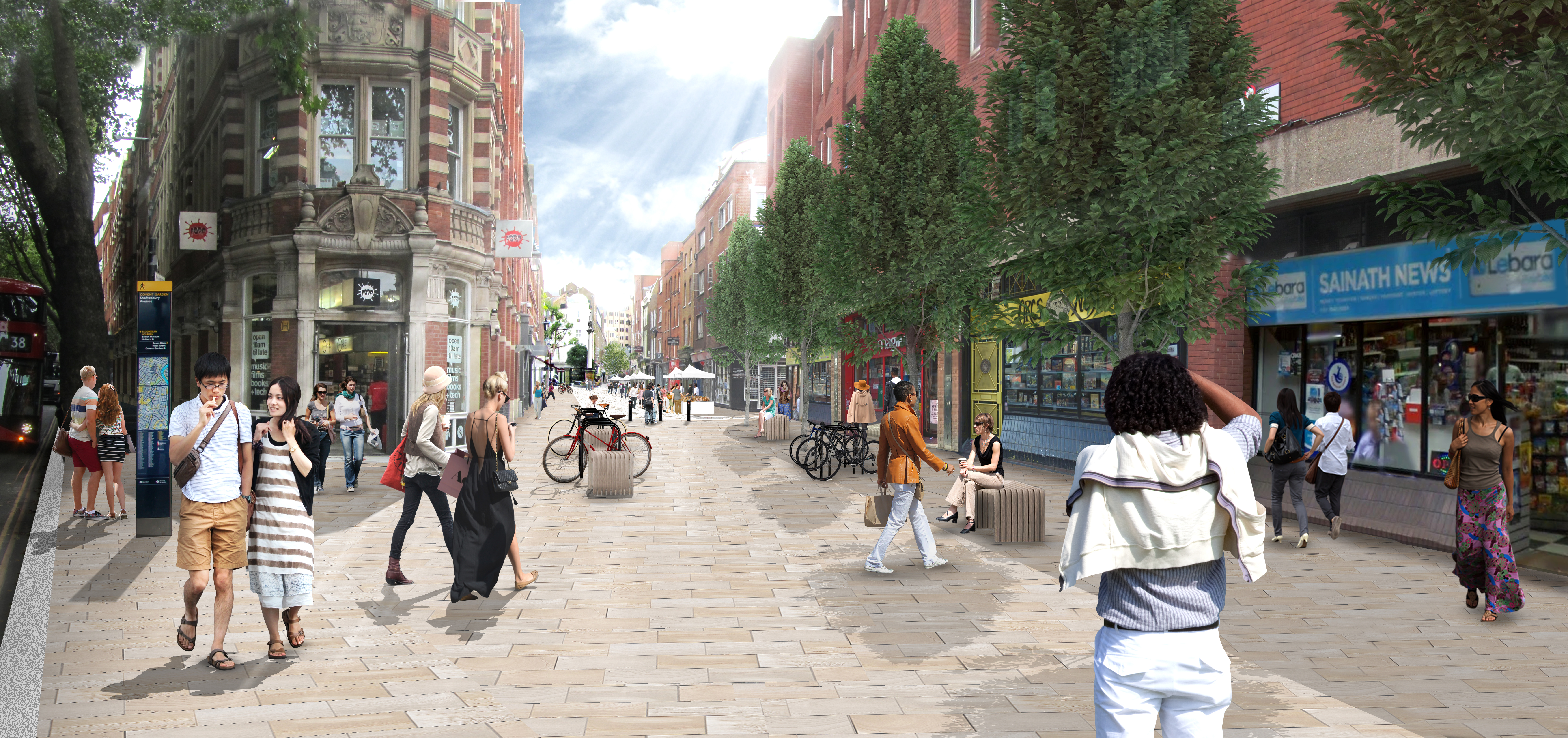
Between Tower Street and the Seven Dials roundabout
- The width of the remainder of street would be reduced from 6.5m to 3m, and the pavements would be widened on both sides to provide more space to pedestrians.
- In order to make the pavement wider, all residents’ parking and motorcycle parking would be removed from Earlham Street Wes - please see plan 2 for further details.
-
The pavement on the south side of the street would include an area that would be shared between loading for businesses and residents, and market operations, during specific hours:
- 8:00-10:00 and 16:00-19:00 loading only
- 10:00-10:30 and 15:30-16:00 market trader set-up / set-down
- 10:30-15:30 market trading hours; no loading allowed
- There would be no road markings on the street, but signage would be provided to inform people when and where they would be able to load.
- The loading / market space would be at the same level as the pavement and could be used by pedestrians outside the loading and market hours described above.
- The number of market pitches would be reduced from 22 to 10 and would be located between Tower Street and the Seven Dials roundabout; 13 of the existing 22 pitches are vacant.
- The new pitches would be larger, with a stall size of 4m x 2m rather than the existing 3m x 1m, and would have a power supply and anchor points for gazebos.
- The pitches would be set in groups of 3-4 with 6m spaces between them to allow pedestrians to cross the street easily.
Existing
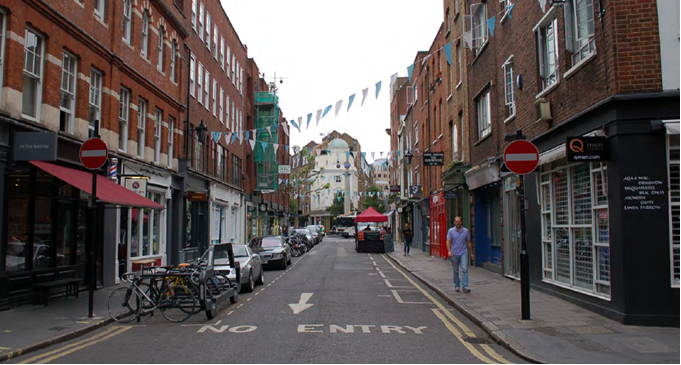
Proposed - During Market hours
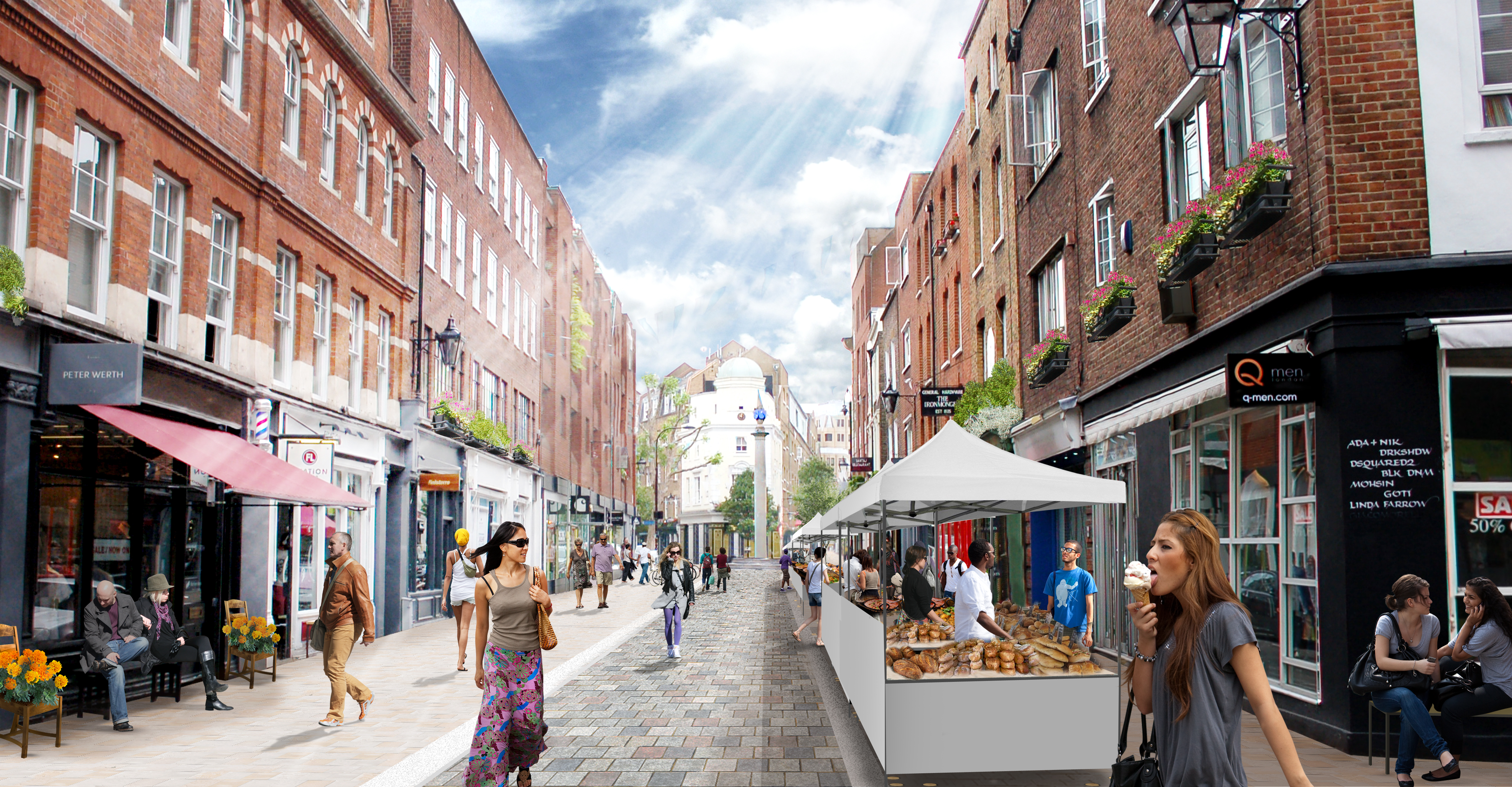
Market gazebo shown for illustrative purposes only
Proposed - Outside market hours

Proposed Parking changes (see plan 2)
The existing 9 residents’ bays and 1 motorcycle bay would be relocated as follows:
- the motorcycle bay would be relocated to Shelton Street
- one resident bay would be relocated to Monmouth Street by extending the existing parking area
- one resident bay would be relocated to Shelton Street by extending the existing parking area
- three resident bays would be relocated to Mercer Street East
- two resident bays will replace two paid for parking bays on Tower Street; the paid for parking bays will both be relocated to Shaftesbury Avenue
- one resident bay will replace one paid for parking bay on Earlham Street East; the paid for parking bay would be relocated to Macklin Street
- one resident bay would be removed entirely, as surveys indicate that there is sufficient residents’ parking in the area without this space

What happens next
While it will not be possible to reply to you individually, all comments will be taken into account. The Cabinet Member for Regeneration, Transport and Planning will make a decision in September 2016 on whether or not to proceed with the scheme and you will be informed via the council’s website of the outcome of this consultation within three months, where possible. Under the Local Government (Access to Information) Act 1985, we may not treat your response confidentially, as it will be available for public inspection.
Areas
- Holborn and Covent Garden
Audiences
- Anyone from any background
Interests
- Business and local economy
- Community and living
- Environment
- Transport and streets

Share
Share on Twitter Share on Facebook